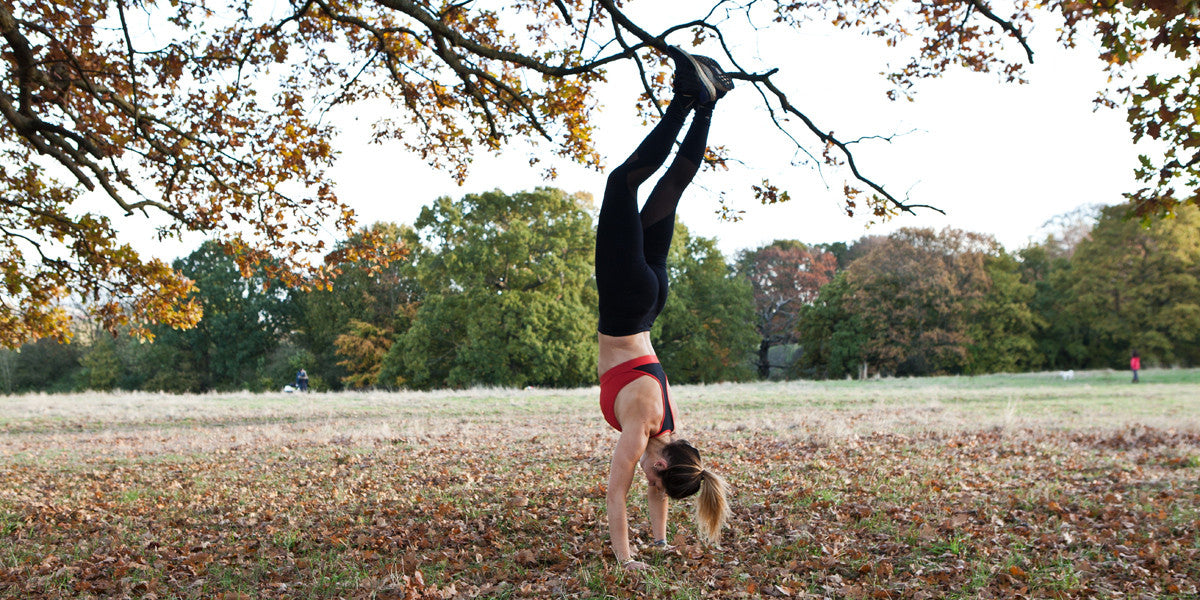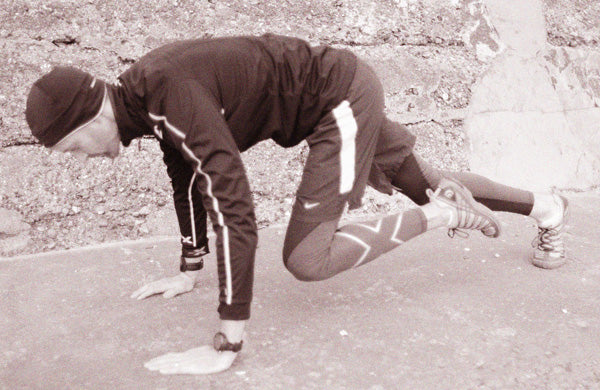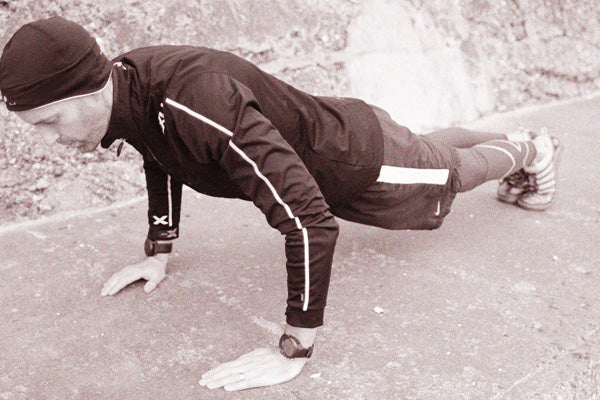
It's becoming more common for people to work through their lunch break, but this time is precious and you could use it to make a real difference to your health. Instead of staying at your desk, you could burn up to 300 calories doing a quick HIIT workout on your lunch break!
What is HIIT?
HIIT stands for High-Intensity Interval Training, a training method which involves short bursts of all-out effort exercises followed by short rest periods. The aim is to maximise your calorie burn during a short amount of time by cranking your heart rate up with tough exercises. During HIIT you should be aiming for your heart rate to be in Zone 4 or even Zone 5, breaking the anaerobic threshold.
How does HIIT work?
The reason HIIT works so effectively is that it causes what we call an ‘after burn’ effect. When you do HIIT, the intensity of the exercise causes an increased need for oxygen so we end up with an oxygen shortage. This means your body has to find more oxygen in order to recover, known as EPOC (Excess Post-Exercise Oxygen Consumption). This, in turn, boosts your metabolism and burns more calories.
How long do I need to do HIIT?
A HIIT workout doesn't need to last hours because of the intensity, so they're perfect if you're short on time. Typically, a HIIT workout will last around 20-45 minutes to give your body a chance to burn enough calories for it to be worthwhile.
Lunchtime HIIT workout routine
What’s great about HIIT is it can be done using just your body weight, which means all you need is a little bit of space. If your office is cramped, why not take this circuit outside? It’s intense enough that it will soon warm you up if it’s cold!
Before commencing a HIIT workout, be sure to warm up for 3-5 minutes. This can involve anything from jumping on the spot to star jumps, anything that will raise your heart rate and warm your muscles up so they are limber and protected from injury.
Top Tip: A lot of HIIT body weight circuits contain lots of exercises which put strain on the wrists such as planks, push-ups and mountain climbers. Be sure to prepare your joints by circling your wrists back and forth before you get stuck in.
For each of the following exercises, try 40 seconds of work and 20 seconds of rest and then repeat from the top:
- Burpees
- Mountain Climbers
- Push Ups
- Jumping Lunges
- High Knees
- Heel Flicks
- Frog Jumps
- Skaters
- Plank Up Downs
- Shadow Boxing Sit Ups
Mountain Climbers
This move fires up your abs whilst keeping your heart rate high. Assume a standard push-up position and run each leg in towards your chest as though you were running off the ground as fast as you can.

Push Ups
Another great all over exercise, push ups can be intensified by lifting a leg, or eased up by coming down to your knees. The trick with push ups is to make sure that despite doing as many as you can at speed, you still make the full range of motion – it should look like your nose is near touching the floor.

Jumping Lunges
Adding plyometrics to any move makes it far more of a challenge. Assume your lunge position sinking nice and low, then as you extend through the legs jumps as high as you can and switch legs, so you are alternating the leg you lunge off, land in a lunging position with the other leg now leading the way. These are sure to set your quads on fire, but keep pushing through and use your arms to help drive you up.
High Knees
Jog on the spot bringing your knees up as high as you can in front of you, tilt your pelvis forward and lean back slightly to get more abdominal activation.
Heel Flicks
Now reverse! Jog on the spot flicking your heels up to your bottom as fast as you can to keep that heart rate up.
Frog Jumps
Start with your legs together and feet facing out, squat down allowing your knees to turn out and then explode up straightening the legs before returning to start.
Skaters
Start in a slight squat, so your legs are loaded with power, then jump sideways to the left and land on your left leg, with your right leg lifted off the ground. Now jump leading with your right leg and land on the right leg, with your left leg away from the floor. Use your arms to propel you further, opposite arm to opposite leg.
Plank Up Downs
Start in a plank off your hands, keeping your bum down and shoulder blades squeezed together to ensure your spine stays in neutral alignment. Bring you right hand down to an elbow plank position and then follow it with the left, now bring the right arm back up to a hand plank and follow it with the left. Avoid looking up as it puts extra strain on the neck.
Shadow Boxing Sit Ups
Lie on you back with your knees bent ready for a sit up, but this time as you brace your abs and bring your upper body up, throw a jab and a cross, punching towards the opposite knee. This adds some extra oblique engagement and makes the exercise a little bit more of a challenge. Breathe out as you lift up and punch.
Now repeat!
What are the benefits of HIIT?
As well as the obvious benefits of keeping you busy during your lunch break and generally more active, HIIT also boasts these benefits:
- Training anaerobically increases your VO2 max.
- HIIT is anabolic, meaning you lose weight from fat and not muscle.
- HIIT increases Human Growth Hormone by up to 450% during the first 24 hours after your workout, which repairs damaged tissue and helps build muscle and burn fat.
- Evidence suggests HIIT can actually help suppress your appetite. Research in The International Journal of Obesity found those who participated in HIIT style exercise consumed on average 200 calories less and had lower levels of ghrelin which is your hunger hormone.
So next time your lunch hour strikes, why not grab your colleagues and challenge them to this anytime, anyplace workout. Don’t forget to pack your deodorant!
Workout at work, How to workout at work, Lunchtime workout routine, HIIT workout routine, What are the benefits of HIIT, How long do I need to do HIIT?


